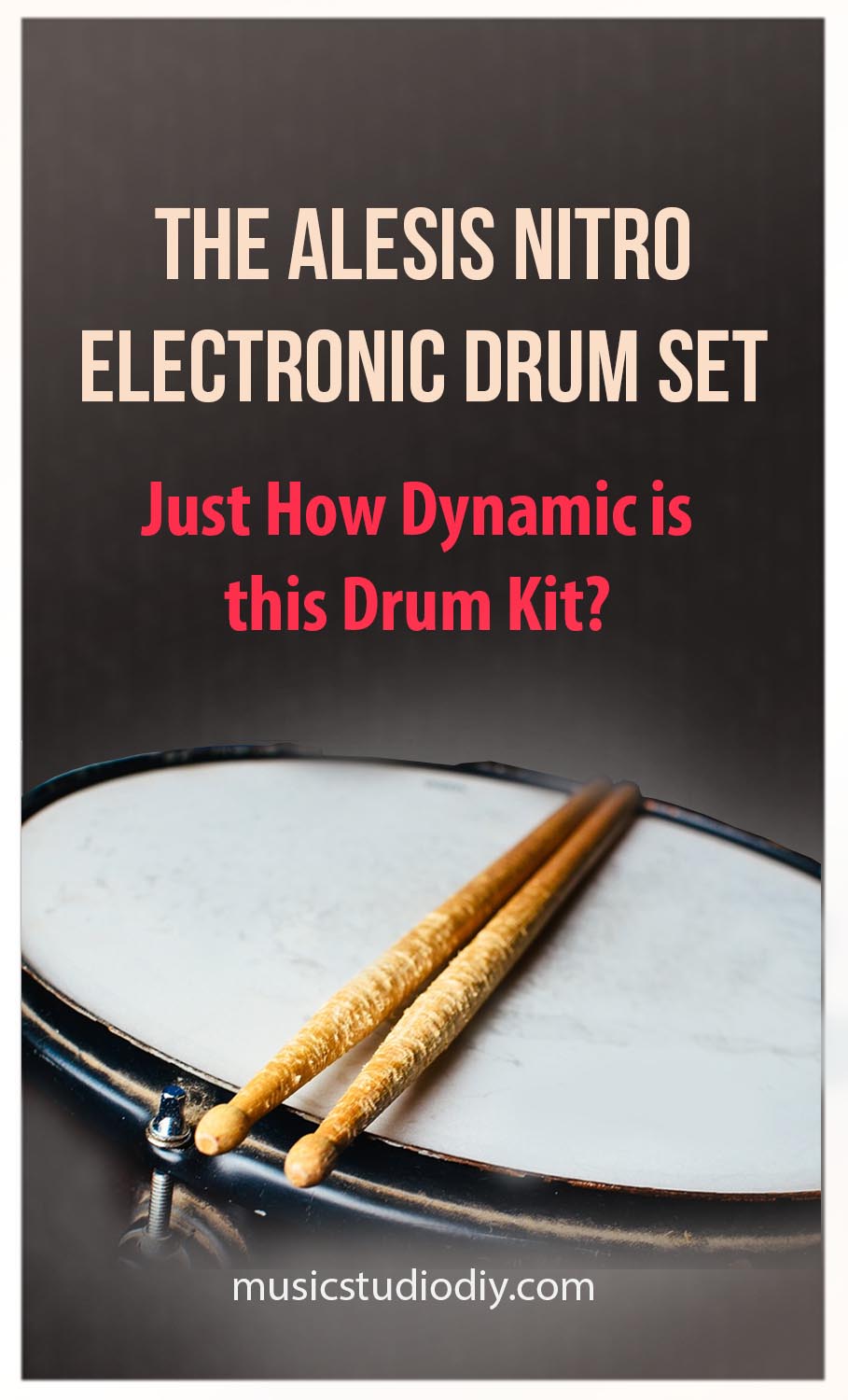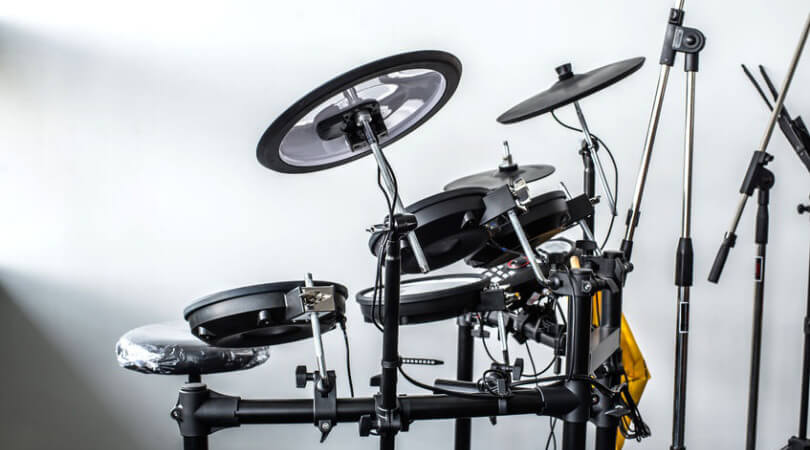 The Alesis Nitro Kit is an amazing alternative to the classic acoustic drum kit. It delivers a high end and incredibly dynamic performance, offering hundreds of percussion sounds to your liking.
The Alesis Nitro Kit is an amazing alternative to the classic acoustic drum kit. It delivers a high end and incredibly dynamic performance, offering hundreds of percussion sounds to your liking.
The complete 8-piece drum set diverges from our much-loved acoustics, yes. However do sensitivity levels differ all that much? Just how dynamic is the Alesis Nitro Kit?
Why Does Sensitivity Matter?
An age-old outlook on musical instruments is one that deems acoustic instruments better than Electric. This comparison is arguably no different to the “organic over synthetic/processed goods” stigma. Or even the nostalgic inclination people have to cling on to paperback books as opposed to e-books… well arguably, of course.
Ok… in all fairness, sensitivity in our electronic counterparts does matter because, well, it determines how close to the original we are. Acoustic instruments provide the ability to modulate volume based on how much force we would apply while playing them. Ideally, you’d want to have the same kind of control playing the Alesis Nitro Kit as you would a regular drum kit.
So indeed, a really great thing to question is whether the Alesis Nitro Kit comes close at all to giving us the kind of control we want.
The Alesis Nitro Kit Specs
Before we dive into our analysis, how about we quickly establish what this drum kit includes…
The Alesis Nitro Kit is an 8-piece set, all encompassing of aspects needed to play like professional. The electronic drum kit includes:
- Three dynamic 8” tom pads
- An 8” dual snare drum, ideal for natural response and experience
- A kick drum with a pedal
- Three 10” symbols, including a crash and a choke
- A 4-post aluminum rack ensuring that everything is safely secured
- Included in this setup is the Nitro electronic drum module with 40 different kits and hundreds of percussion sounds
The drum module also includes built in learning features, an onboard metronome as well as an advanced sequencer, amongst other features. Find out more here on Amazon.
Sensitivity/Dynamic Levels of the Kit
You can certainly expect high levels of sensitivity when it comes to this drum kit. The most subtle handed applications are very well received, and translate into sound in immediate time. There is virtually no latency. The video below offers some great perspective on how the drum set performs with regard to sensitivity.
The drum kit offers the ability to adjust the sensitivity and curve based on your requirements through the module. This can be applied to all components of the drumk kit, or to each individually. The kit does come with its own set of drumsticks. However, you may want to consider adjusting the sensitivity of the pads based on the weight and type of drumsticks used. The heavier the drumsticks, the more you may have to lower the sensitivity. Using lighter sticks would have an inverse effect.
Just how loud can I get with this Drum Kit?
Again, we might briefly revisit the whole acoustic vs. electronic debate. My intention here is not necessarily to push the idea that one is better that the other. Not at all. But rather, it is to show you that one might be as good as the other depending on what your aim is.
You might be operating in a space a little too confined… Or you live in an apartment building where noise levels affecting neighbors is a concern. The Alesis Nitro is a decent alternative when it comes to controlling levels of noise during the recording process.
MIDI In and MIDI Out Jacks for Amplifiers
The inclusion of MIDI in and out ports within the kit, makes for more a dynamic recording ability. You can choose to connect the Alesis Nitro to an external set of amplifiers to get a really maximized volume. From here onward, all you need is a set of dynamic microphones to help you record your music. This type of setup is ideal especially when recording multiple instruments in a band setting.
Basically, in a nutshell, because you’re able to connect the drum kit to amplifiers… You could easily get pretty loud if you so desired.
MIDI In and MIDI Out Jacks to Computer
Alternatively, you could choose to record directly into a DAW on your computer. This offers the advantage of reduced noise levels (if that is what you’re after of course). This could also refer to less unwanted reflections if you haven’t got your acoustic treatment to a tee just yet. This type of setup obviously wouldn’t work with band recordings; however mixing is made a lot simpler this way.
Recording with Microphones
Although I’ve previously mentioned how to go about recording in brief, here’s a little more worth noting.
Indeed, the MIDI ports offer several recording advantages, including cost effectiveness.
But how so?
Recording acoustic drum kits involves either the setup of several dynamic microphones, or an overhead/room microphone. An example of these room/ribbon mics be something like these on Amazon:
Quite evidently, these can often be really expensive for a home music studio. Especially at a beginner level So… on a budget, being able to record through a MIDI out to a DAW port or amplifier has its advantages.
Should I Try It Out?
If you’re looking for a budget friendly and space savvy drum kit, the Alesis Nitro is really recommendable. Overall, the electric drum set is certainly dynamic and sensitive enough to give you the kind of volume control you would need. It’s not quite the acoustic you may know, but certainly offers a similar experience and performance.
Not only is the sensitivity is highly responsive based how you play, but it is also great that you’re able to control the sensitivity through the module. By all means check out the Alesis Nitro Kit on Amazon here.

